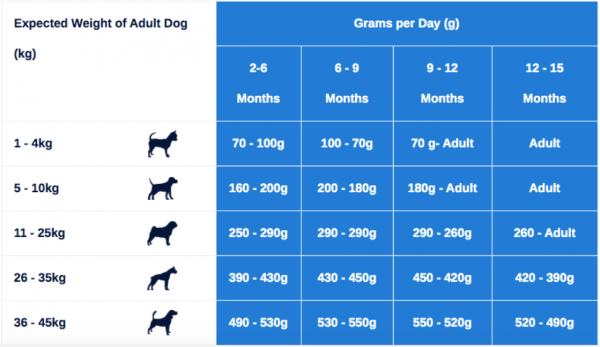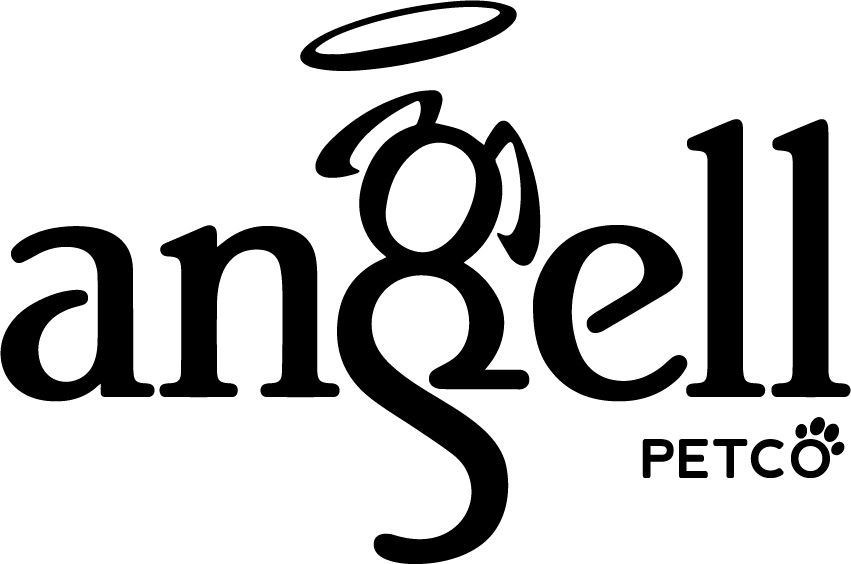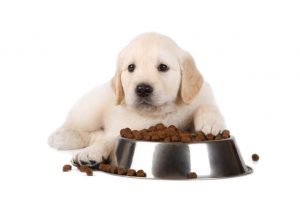Whether you’re feeding your first puppy or nourishing an entire litter, you’ll want to be sure that you’re giving your dog(s) the best chance of getting the vital nutrients they need in the first stages of development.
The puppy stage lasts for around two years in total with the height of puppyhood at around 7 months.
During this time, puppies are undergoing important processes such as mental advancement, joint growth and eye development. They may also develop allergies during this time and show signs of having a sensitive stomach. In short, this is a stage where you’ll need to be vigilant with your dog and make sure you’re feeding your pet the correct diet.
Despite the gravity of the challenge, choosing puppy food can be relatively simple.
Take note of the following eight tips to help aid your decision.
Tip #1 Lean Towards Dry Food
Puppies can eat both moist and dry food. However, puppies should be fed four times per day – as opposed to the two meals per day rule for adult dogs. This is due to the growth rate of puppies versus dogs which is a whopping twenty times faster.
As such, you’ll need to give your puppy plenty of opportunities to fuel up.
This doesn’t mean puppies eat more than average canines. Instead, they need much smaller amounts of food more frequently. You’ll gradually need to increase the grams of food you give to your puppy depending on their weight and age as shown in the chart below.

Feeding your puppy kibble – dry food – is easier in terms of portion control and keeping food fresh throughout the day. Plus, dry dog food contains significantly more protein as it’s never diluted with water.
Tip #2 Pick a Food – and Stick With It
Since your focus will be on feeding your puppy the correct amount of food, you’ll want to stick to the same food source to make this job simpler.
Unlike humans, dogs don’t need a three-course menu and meal variation.
It’s easier for dogs to build a stable relationship with food if they eat a uniform meal that has the right balance of protein and fat, as well as a meal that’s packed full of nutrients.
If you pick a food type and then decide to change it, increasing the weight of food will become complex since the nutritional value of each food will vary.
The whole point of slowly increasing the food in correlation with your dog’s weight is to slowly increase the intake of that food and all of the nutritional benefits that come with it. Since not all foods are born equal switching the same amount of food from one brand to the other could be the equivalent of eating a handful of raspberries or a handful of chocolate.
Tip #3 Choose All–Natural Ingredients
The best dog food for puppies is always natural.
Since you can’t switch up your puppies food, you’ll want to start with a solid foundation that has no artificial ingredients or hidden fillers.
It takes dogs longer to digest food – even when they’re puppies. This means dogs can’t handle a chemical blend of foods as this will easily upset their stomach and cause all sorts of digestive problems.
Spotting all-natural food is easy, so long as you don’t get sucked in by marketing.
Try to ignore any bold claims on the front label even if this means blocking out words like “natural”. Instead, you’ll want to turn your attention to the ingredients list to see if the blend contains only clean ingredients.
Being able to recognise every ingredient on the list is a good sign that the kibble is all-natural.
Tip #4 When In Doubt, Go Hypoallergenic
You won’t yet know if your dog has allergies since these can develop over time.
However, it’s better to be safe than sorry so always pick up hypoallergenic food if you can see it on the shelves.
Hypoallergenic food won’t harm a dog if they don’t have allergies but it will protect dogs that do. Because of this, there’s no reason why you wouldn’t give your dog hypoallergenic food that minimises the risk of reaction.
Tip #5 Opt for Low-Fat Treats
Getting a new dog can be exciting causing you to want to buy every product available.
However, training treats should be low in fat especially for puppies as the bulk of your training will take place during these early stages of development. It’s easy to overfeed dogs with treats and accidentally take them above the recommended threshold. Puppy food is loaded with higher fat quantity than average dog food to help puppies to gain weight. This means puppies don’t need any extra fat during the course of the day.
As with kibble, you’ll want to look for natural dog treats for training that have zero added ingredients.
When it comes to training with food, you’ll want to follow all the same principles as you would your regular kibble and avoid varying the type of treats you use. While this might sound boring to you, uniformity is better for your dog’s gut health and obedience training progress.
Tip #6 Stick to Dog Food
While dogs are a man’s best friend, their companionship stops at the dinner table.
It can be tempting to share a bond with your dog over food but feeding scraps of food from your plate leads to bad habits, bad health and bad behaviour.
If you’re a new dog owner, you might be unaware of some foods that are toxic to dogs which are fine for human consumption. Grapes are a great example of a food that we should eat more of but should never offer to our puppies.
In short, never feed human food to dogs – no matter how tempting.
Once you begin feeding your food to dogs it can be difficult to reverse this behaviour and the expectations your dog has a result.
Tip #7 Routine Is Just As Important As Food
The contents of your dog food are super important. That’s why we’ve developed a world’s first cooking process with gentle preparation.
However, your dog’s relationship with food is just as mental as it is physical.
Even if you have the finest dog food to hand, your dog could develop bad eating habits if its mental relationship with food is compromised.
You should make a strict schedule for puppy feeding with on-the-dot meal times. These help to establish routine aiding digestion and mentality towards food. If your puppy doesn’t show interest in food for fifteen minutes after mealtime has begun you should then remove this food to avoid grazing.
Never interfere with your dog’s mealtime to allow your puppy to enjoy food without distractions. If you remove the bowl during eating or interrupt eating this can lead to aggressive behaviour or detachment to food.
Tip #8 Feed Puppies Puppy Food
This tip is simple but essential.
Having separate lines of puppy food and dog food isn’t a marketing ploy.
Adult dog food is processed differently to puppy dog food and isn’t suitable for underdeveloped canines.
From the size of the kibble to the nutritional profile, puppy food is designed to be easy to swallow and digest, as well as contain everything a dog needs to grow.
That’s why we’ve developed Superior Puppy Complete that is tailored to growing dogs.
Superior Puppy Complete uses the same gentle cooking process and high-quality ingredients as our regular foods but can be bought in a small kibble size.
Shop Superior Puppy Complete to give your dog the best start in life. You can order nine different weights ranging from 50g to 150kg – all with free delivery.


